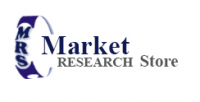Detailed Examination of the Lithium-Ion Battery Market 2016 Size, Shares, Analysis, Forecast and Growth to 2020
Market Research Store releases a new market research report "Global Lithium-Ion Battery Market 2011 Forecast to Industry Size, Shares, Strategies, Trends, and Growth 2017" to add to its collection of research reports.

Deerfield Beach, FL -- (SBWire) -- 03/29/2016 --A new study on Lithium-Ion Battery, Lithium Polymer Battery, Thin Film Battery And Zinc Air Battery Market Shares and Forecasts, Worldwide, 2011-2017. These products power cell phones, portable electronics, and laptops. They promise to power electric vehicles. They are the base for smarter computing. The 2011 study has 716 pages, 254 tables and figures. Lithium-Ion batteries are evolving. Lithium thin film solid state technology provides vast improvements in energy density and creates units that can be recharged 40,000 times, up from 200 times for traditional batteries.
Li-Ion (Lithium-Ion) batteries are a type of rechargeable battery. Lithium ion batteries are one of the most common rechargeable batteries in portable electronics. Lithium ion batteries have one of the best energy densities, no memory effect, and a slow loss of charge when not in use, in comparison with other chemistries of rechargeable batteries.
Lithium ion batteries are environmentally safe because there is no free lithium metal. They come in a variety of sizes such as AA, AAA, RCR123A, 18650, 9V, 2032 button cells, and more.
Do Inquiry For Sample Before Purchasing Report: http://www.marketresearchstore.com/report/lithium-ion-battery-market-shares-strategies-and-forecasts-worldwide-2397#requestSample
Fabrication methods have not yet scaled to large format batteries. This is because the cost of vacuum deposition has been prohibitive. Researchers are working to develop an alternative deposition process. It has the ability to make nanostructured electrolyte and electrode materials with chemistries that work at scale that is the challenge.
Every big automaker, battery maker, national lab and university materials-science department in the world has a team of PhDs whose lives consist of testing countless combinations of elements in an effort to build a thin film battery. There is a fundamental challenge in front of every battery organization to evolve efficient solid state batteries.
In considering the possible application of different batteries, it is important to know how much energy can be delivered at a specified discharge rate or discharge power. Graphs of the energy/cm2 can be delivered at a given power density for the lithium and lithium-ion batteries.
A low temperature deposition process for thin film batteries enables use of flexible, polymer foil as the substrate. This technology largely reduces the production cost of the thin film batteries. Successful development of a low temperature manufacturing process (<350ºC) opened up the possibility of using a polymer substrate such as Kapton, thereby significantly reducing manufacturing cost, while gaining flexibility and significantly reducing the overall thickness of the cells.
Lithium-Ion battery market driving forces include business inflection that is achieved by delivering electric vehicle and smart computing technology that supports entirely new capabilities. Sensor networks are creating demand for thin film solid state devices. Vendors doubled revenue and almost tripled production volume from first quarter. Multiple customers are moving into production with innovative products after successful trials.
Do Inquiry For Buying This Report: http://www.marketresearchstore.com/report/lithium-ion-battery-market-shares-strategies-and-forecasts-worldwide-2397#reportPriceDetails
A strong business pipeline has emerged with customer activity in all target markets. Vendors expect full-year revenue to more than double in 2011. The market focus is shifting from ramping capacity to driving manufacturing efficiencies and achieving margin improvement, indicating increasing market maturity.
The worldwide demand for energy is steadily increasing, doubling every 15 years. The major effort is to sustain growth in the electricity supply without causing irreversible harm to the environment. Solar energy has rapidly grown as a clean, renewable alternative to limited fossil fuels. Recognition of the need to reduce reliance on coal and fossil fuels is driving interest in solar energy.
The need to reduce reliance on coal and fossil fuels is intuitive. The science agrees -- climate change is a reality. Citizens want to do something about climate change. Countries wish to not have dependence on foreign suppliers.
Improved energy density is a significant factor to be considered in development of thin film battery materials. Thin film lithium batteries have the potential to reach an energy density as high as 1000 Wh/l. Cell phones and laptops using these thin film batteries will be capable of running up to four times longer than on other lithium ion batteries having the same physical size.
Lithium-ion categories: are cobalt, manganese, iron-phosphate, polymer and nickel manganese-cobalt. These are the main types of commercialized battery in China. It remains to be seen how thin film batteries utilize these or other materials.
Contact US:
Joel John
3422 SW 15 Street, Suit #8138,
Deerfield Beach, Florida 33442, USA
USA Tel: +1-386-310-3803
GMT Tel: +49-322 210 92714
USA/Canada Toll Free No.1-855-465-4651
Email: sales@marketresearchstore.com
Web: http://www.marketresearchstore.com/
Media Relations Contact
Joel John
Corporate Sales Specialist
www.marketresearchstore.com
855-465-4651
http://www.marketresearchstore.com/report/lithium-ion-battery-market-shares-strategies-and-forecasts-worldwide-2397
View this press release online at: http://rwire.com/675900